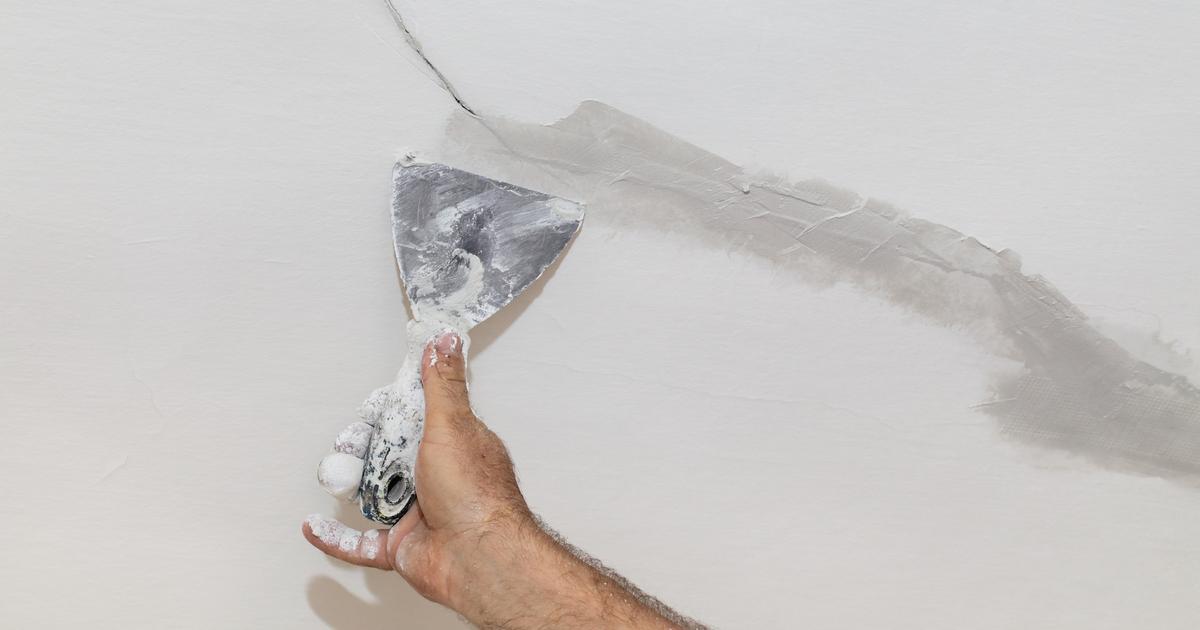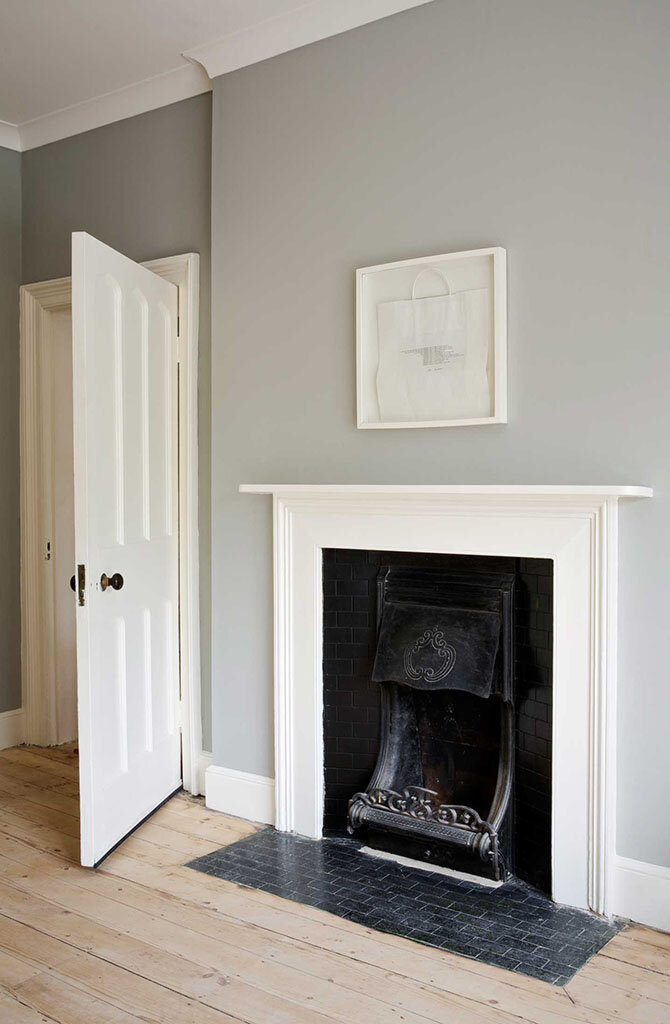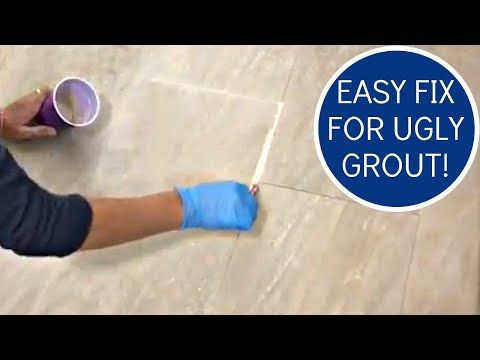Fix cracked plaster ceiling
How to Fix Plaster Ceilings
By using modern materials and a traditional technique, it is possible to repair plaster ceilings that are cracking and delaminating. Here is a step-by-step guide to how to fix plaster ceilings in your old house.
- Author:
- Peter and Noelle Lord
- Publish Date:
- Updated Sep 2, 2021
What old-house owner doesn’t have a cracking or sagging plaster ceiling in need of repair somewhere? Besides the normal wear and tear of living, plaster-and-lath ceilings are at the mercy of gravity, and they can take only so many water leaks and structural movements before they pull away from the framing.
The good news is, it’s possible to repair and rescue plaster ceilings from further damage. We have successfully reattached many old ceilings by injecting adhesive between the plaster and lath where the keys (anchors) have broken away over time. Though variations of this technique are not new–texts from the 1920s recommend liquid sulfur as an adhesive–we use modern materials that are easy to handle and inflict minimal damage to sound plaster. With these methods and good tool skills it’s possible to restore the integrity of plaster ceilings for many more years of service.
Sizing up Plaster Ceilings
Stained cracks and suspicious shadows—the telltale signs of a delaminating plaster ceiling.
After correcting whatever problem made the ceiling loose in the first place (leaky roof, structural alterations), the first step is to assess how far the ceiling has pulled away. Gently push on the surface and judge the amount of play between plaster and lath. Hopefully, you will feel it move back into place like a jigsaw puzzle piece sliding into its own unique spot.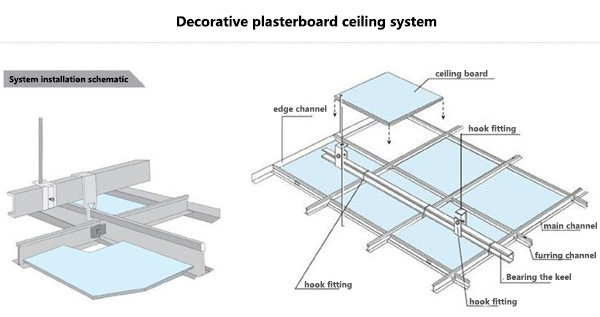
If there are broken keys or debris in the way, the plaster will resist seating, and it will feel and sound “crunchy” akin to breaking eggshells or crushing popcorn. Do not force it back into place or more plaster may break. Instead, just gently encourage the plaster with the flat of your hand. If the separation is slight—say, between 1/4″ and 1/2″—good reattachment is likely because the plaster will usually push back into place solid and flat against the lath. If the plaster sags 1/2″ to 1″ from the lath, there is often too much debris (broken keys, years of silt) between the plaster and lath for success.
Remove the Debris
Unless you can vacuum out all this debris from above, reattachment is probably not an option. Often we find that the worst part of the ceiling has too much debris, and we have to remove this section, reattach the edges, then infill the lost parts with new plaster. Plaster that is soft and crumbly will not hold up during the pushing and drilling and has to be removed as well.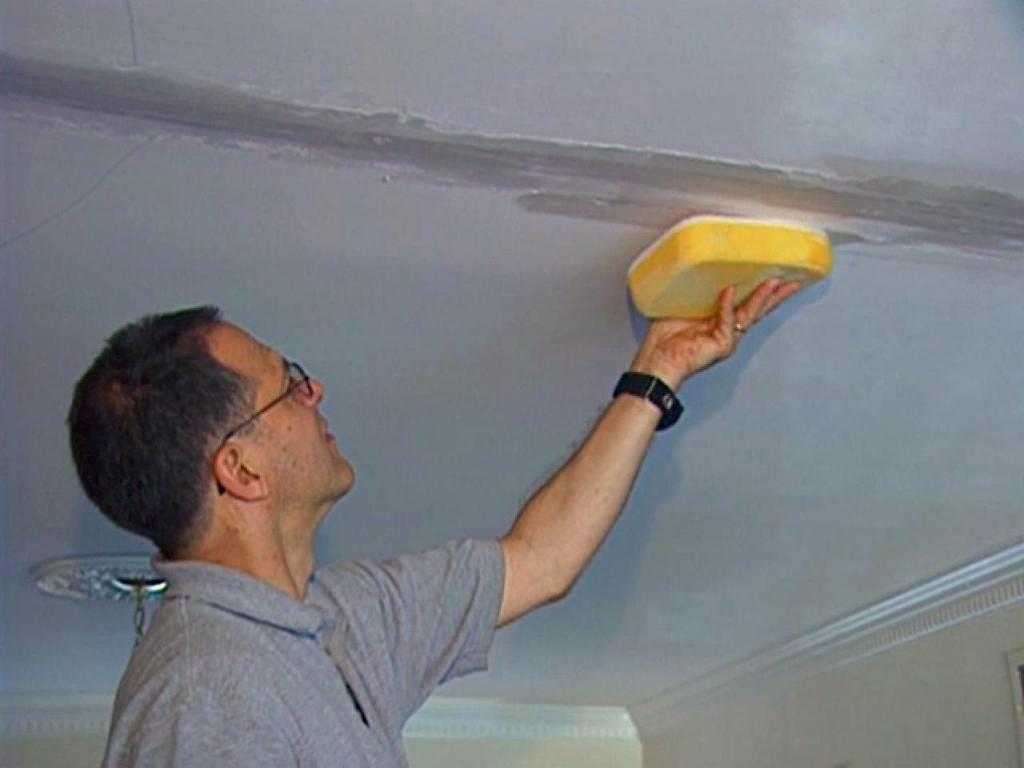
Holding a vacuum nozzle on the drill bit helps suck the 1/4″ injection holes clear of dust.
Removing areas of damaged plaster—particularly in a ceiling—will encourage more plaster to come down, especially if you use a chisel-edged tool. (We call this the domino-delamination effect.) To control this tendency we recommend carefully marking out your repair plan, then removing any areas with a sharp utility knife. Mark with a lumber crayon or pencil; a pen will bleed through your paint later on.
Find The Wood Laths
The holes you bore to inject the adhesive must be directly beneath the wood lath—not the spaces between the lath—so that the adhesive can bond to something solid. If you have removed any plaster, or dug out a crack for repair, then you can see the positions of the lath. In a reattachment-only repair, however, finding lath is basically hunt-and-peck. Sometimes, if the plaster is not too thick, you can stand back and look for ghosts or shadows of the lath showing through the finish coat.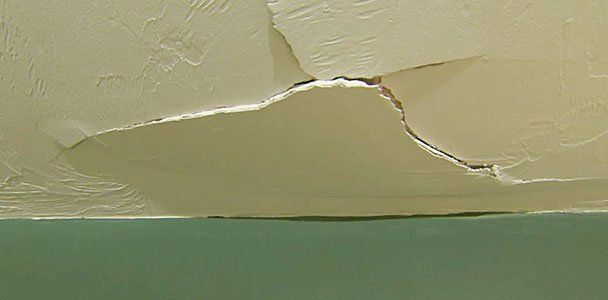
Once you have a solid fix on one lath, assume that the rest of the lathing is 1 1/2″ to 2″ wide and spaced approximately 1/4″ to 1/2″ apart. If you have an infill area that needs reattachment at its edges, mark for injection sites 1 1/2″ to 2″ back from the edges. If you are only reattaching plaster, plan for injection holes every 3″ to 4″, no more than 6″ apart.
Drill Injection Holes
We bore injection holes with a 1/4″ carbide drill bit. Making these holes presents a second challenge because it is very important to bore only through the injection surface. For example, if you are reattaching from the plaster side, you must bore completely through the plaster, yet stop before going into the wood lath.
The 1/4″ injection hole is an effective size for a good seal with the adhesive tube.
Conversely, if you are reattaching from above, you need to bore through the lath, but stop before the plaster. By paying attention to the changing resistance of the materials on the drill bit, it’s possible to develop a feel for these different layers.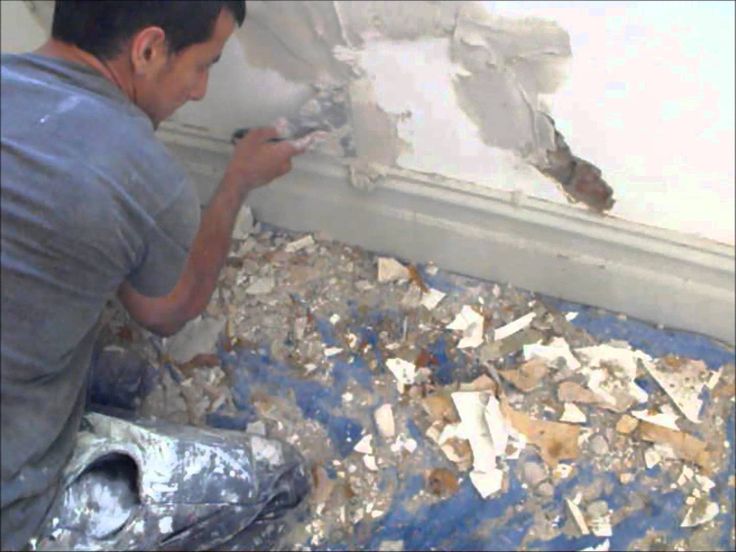
Vacuum Again
After you have bored your injection holes, you need to vacuum out the debris and drilling dust. Older plaster is soft, so be careful not to suck it off the ceiling with the vacuum! Place your hand near the hole to gently support the plaster while you vacuum using the other hand. Do not push the plaster back up into place, however; the void will allow the vacuum to pull some of the debris out through the hole.
If you have access from above, you can vacuum more of the silt and debris. Remove keys that are visibly loose or broken as well. Use a wet/dry shop vacuum designed to handle the fine dust. Plaster will kill a household vacuum in short order. Next, wet the injection holes by either spraying down the lath with a squirt bottle or squirting up into the drilled holes from the plaster surface. Wetting encourages the adhesive to travel farther when it is compressed and will also slow the drying time slightly for a stronger bond.
Inject The Adhesive
Finally it’s time to inject adhesive.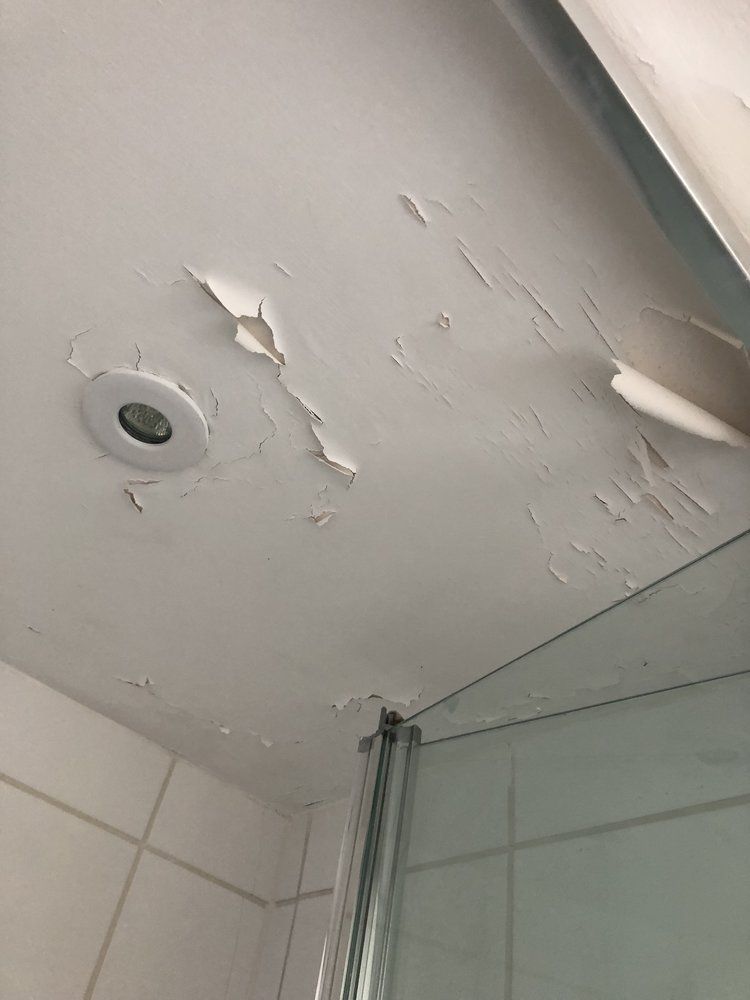 We use a water-based, latex product that is actually a vinyl floor adhesive. However, any good-quality latex or acrylic adhesive can work (for example, Liquid Nails or floor adhesive). You can purchase these products at construction supply houses and hardware stores in caulking tubes for small projects or five-gallon pails for large jobs.
We use a water-based, latex product that is actually a vinyl floor adhesive. However, any good-quality latex or acrylic adhesive can work (for example, Liquid Nails or floor adhesive). You can purchase these products at construction supply houses and hardware stores in caulking tubes for small projects or five-gallon pails for large jobs.
We use a caulking gun with the tip cut to fit snugly in our 1/4″ holes, and inject the adhesive until the plaster moves ever so slightly (one squeeze of the average caulking gun is usually enough). If you inject too much adhesive you will actually push the plaster off the ceiling. As you inject, follow along with a damp sponge to wipe away the excess adhesive that leaves the holes when you remove the nozzle.
Adding wire lath over wood lath improves an infill repair.
Complete your entire series of holes, then go back over the plaster with a clean, damp sponge to remove further glue residue. Follow the same process if you’re working on the lath side, leaving adhesive wipe-up as an optional step..jpg)
Secure The Plaster With Forms
Once we have injected adhesive into the repair area, we push the plaster back into place against the lath and secure it with forms. This step spreads the adhesive so that it bonds to a greater surface area.
We use flexible plywood squares (1/2″ to 3/8″ thick) covered with a layer of sheet polyethylene. Do not underestimate the importance of this layer of poly; if you forget it you will glue the plywood to the ceiling and take all the plaster with it if you attempt to remove the form. (Sound like first-hand experience?) Last, we secure these in place with screws or wood shores running to the floor, then allow the adhesive to set up for 24 hours.
Screws Versus Shores
Screws save the time of fitting wooden shores and keep the work area clear, but they can damage the plaster and leave more holes to fill later. Shores are more appropriate for fragile, decorative, or museum-quality plaster, and we use them for both plaster-side and lath-side reattachment.
Remove The Forms
The next day you can remove the forms. Where some of the plastic sticks to adhesive injected from the plaster side, simply scrape it off with a putty knife. The adhesive is still soft around the holes at this point, but has set up enough to remove the forms. On the plaster side, scrape off the dried adhesive residue with a drywall or putty knife, then use the corner of a putty knife to gently scallop out excess adhesive showing from the hole.
Fill the Injection & Screw Holes
As with all good restorations, a successful repair is hard to see.
As it dries fully over another day or so (depending on heat and humidity) the adhesive will further retreat into the hole, leaving a clear space to fill. We usually fill the injection and screw holes with Durabond 45 (sandable), mixed to the consistency of peanut butter, because this product has a quick set-up time and dries very hard with minimal shrinkage. However, any vinyl paste filler or plaster/joint compound can be used for this step. Usually, it takes two to three applications to fill the holes flush with the ceiling, depending upon the product. Other than this, the ceiling is now reattached and ready for a skim-coat of plaster or a fresh coat of paint.
Usually, it takes two to three applications to fill the holes flush with the ceiling, depending upon the product. Other than this, the ceiling is now reattached and ready for a skim-coat of plaster or a fresh coat of paint.
Read more:
- Plaster 101: DIY Repairs, Tools & Techniques
- Repairing Historic Flat Plaster Walls & Ceilings
- How to Repair Failing Plaster
- How to Repair Plaster Cracks
- How to Repair Textured Plaster
Tags: adhesives ceilings Noelle Lord OHJ January/February 2001 Old-House Journal Plaster repairs
restore its smooth surface |
When you purchase through links on our site, we may earn an affiliate commission. Here’s how it works.
(Image credit: Getty Images)
By Tara King
last updated
Wondering how to repair a plaster ceiling? There are a few different ways you can do it.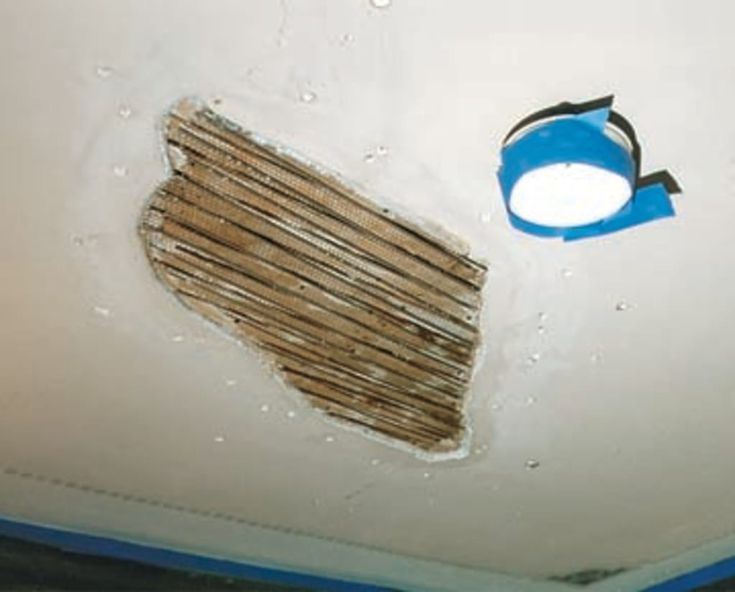 Which method you use ultimately comes down to the cause of the damage and how extensive it is (and sometimes the structure of your ceiling, but more on that later), so it’s always best to start with a little investigation.
Which method you use ultimately comes down to the cause of the damage and how extensive it is (and sometimes the structure of your ceiling, but more on that later), so it’s always best to start with a little investigation.
The good news is that in most cases, it’s relatively simple to restore the surface to its smooth former glory, meaning that you won't have to plaster a ceiling in its entirety.
‘You can usually scrape away any cracks or holes in the plaster using a putty knife and then repaint the area. Another option is to patch up smaller areas that are damaged using drywall compound or spackle. If the damage is particularly severe, replacing the ceiling altogether might be the best route to go down’, says Luke Lee, co-founder of Ever Wallpaper .
In this case, learning how to patch a drywall ceiling or how to hang a drywall ceiling can prove useful.
How to repair a plaster ceiling
Before you start fixing, it’s worth establishing the structure of your plaster ceiling, and find out, perhaps, why your ceiling is cracking. Moisture could be the cause, in which case you’ll need to know how fix a ceiling with water damage. Modern building methods have seen traditional lath-and-plaster ceilings replaced by drywall or plasterboard that’s then skimmed with a thin layer of plaster to achieve the same smooth surface. Repair methods will vary depending on the type of plaster ceiling you have in your home.
Moisture could be the cause, in which case you’ll need to know how fix a ceiling with water damage. Modern building methods have seen traditional lath-and-plaster ceilings replaced by drywall or plasterboard that’s then skimmed with a thin layer of plaster to achieve the same smooth surface. Repair methods will vary depending on the type of plaster ceiling you have in your home.
Whether the damage has come as a result of fixing a ceiling leak, shoddy DIY work, simple wear and tear or something a little more serious, we’ve put together an easy guide to help you recognize the warning signs and know how to repair a plaster ceiling accordingly.
Track down the cause of the problem
Before you start any repair work on your ceiling, you’ll need to work out what caused the damage in the first place. Sometimes it’s obvious; unsightly yellow stains are a clear sign of a moisture problem, so you’d be best off researching how to fix a ceiling with water damage for example. Other times it can be a little trickier.
The cause of a crack in a plaster ceiling is more than likely cosmetic, occurring due to changes in temperature or as a result of DIY work, for example. However, it’s better to investigate.
‘While minor cracks are usually nothing to worry about, thicker ones (anything more than 1/10 of an inch) can be a warning sign that structural problems may be afoot. In this case, you should bring in a professional to inspect in more detail’, says Ash Reed, interiors expert at Living Cozy .
If the crack in question traverses the wall as well as the ceiling, you will want to know what causes cracks in walls to help solve the problem.
Only once you’ve established the cause – and resolved any issues – are you in a position to think about how to repair a plaster ceiling.
Protect the area
Regardless of the extent of repair work necessary, you’ll need to wear protective gear including a face mask and goggles, particularly when working with old plaster. Cover walls and furniture with plastic and lay down drop cloths so any dust and scrapings can be easily cleaned up afterwards.
How to repair cracks and holes in a plaster ceiling
Cosmetic issues such as repairing nail holes and gouges caused by DIY work and fixing ceiling cracks that are fine in a plaster ceiling are relatively easy to deal with. It may seem counterintuitive, but the best thing you can do is to make the crack slightly wider. ‘This will ensure you get enough easy sand into the crack for a substantial strong fill’, explains Nicholas Smacchia from Westchester-based company, Plastering by Nicholas .
Ensure you have brushed out any debris before applying joint compound or filler with a putty knife, scraping off the excess as you go. After applying several thin layers, let it dry and sand the area to create a flat, smooth finish. Then prime and paint to match the wall.
For wider cracks, consider applying mesh or fiberglass tape over it before spreading joint compound over the top and smoothing out. This same method works for small holes, too.
How to repair a sagging plaster ceiling
Typically found in older homes, traditional lath-and-plaster ceilings are formed by nailing strips of wood or metal mesh (referred to as laths) to the ceiling joists to form a strong base, then adding layers of plaster on top.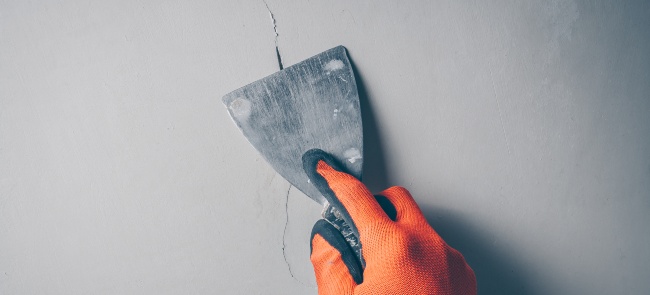
Over time, plaster can dry out, weaken and lose its holding strength, and the laths can start to pull away. The first sign of this is sagging or bulging plaster. We’d advise calling in a professional for a job like this, however, it you want to attempt it yourself, here’s how the DIY experts at B&Q advise you do it:
‘Prop up the sagging plaster using a flat piece of chipboard or plywood nailed to a length of 38mm-square timber. This should reach from the floor to the ceiling. Lift the floorboards in the room above and vacuum between the joists over the bulge to collect up loose plaster.
'Mix fairly runny boding undercoat plaster and pour it over the damaged area to replace the broken plaster. Leave the supporting prop in place until the plaster has dried and bonded to the laths’.
You can then either remove the old plaster or leave it in place and reface the entire area with a new drywall.
Does water damaged plaster need replacing?
It depends.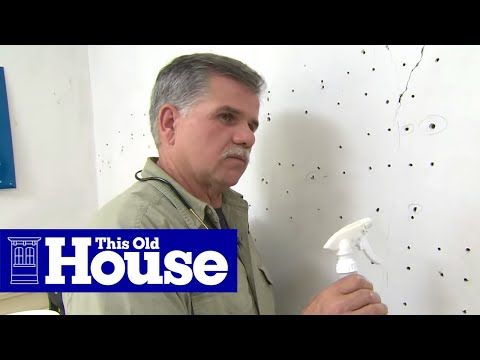 If modern plastering applications have been used, you’ll need to assess whether the drywall underneath has suffered extensive water damage. Indicators include large holes or sagging in the ceiling, as well as mold and discoloration.
If modern plastering applications have been used, you’ll need to assess whether the drywall underneath has suffered extensive water damage. Indicators include large holes or sagging in the ceiling, as well as mold and discoloration.
‘In this case, the ceiling would need to be fully replaced, including structural elements such as beams’, says Adam Graham, construction analyst at Fixr .
Repairs aren’t usually that drastic, however. Assuming the water damage is surface-level and the laths are still intact, you can simply replaster over the top.
Can you repair part of the ceiling?
If only a small part of your ceiling is affected, you can make a simple repair with a plasterboard or drywall patch. Cut out the damaged area of plaster, then use drywall to patch it, securing it in place with drywall screws.
‘It’s a good idea to take off the old plaster before you buy the plasterboard to make a repair patch. Then you can choose the thickness closest to the depth of your plaster’, say the DIY experts at B&Q.
Can I fix my own ceiling?
It depends on the extent of the repair work required and the finish you’re expecting. Minor issues such as cracks and water damage are easy enough to DIY, however, larger fixes should be dealt with by professionals to ensure the ceiling is repaired to recommended safety standards.
‘Whether you decide to do the work yourself or hire an expert, it's important to address repair issues as soon as possible. Leaving them unaddressed for too long can lead to costly problems further down the line’, says Luke Lee.
For 10 years, Tara King worked as a Content Editor in the magazine industry, before leaving to become freelance, covering interior design, wellbeing, craft and homemaking. As well as writing for Ideal Home, Style at Home, Country Homes & Interiors, Tara’s keen eye for styling combined with a passion for creating a happy – and functional – family home has led to a series of organization and cleaning features for H&G.
Plasterboard Ceiling Cracks - Sealing Gypsum Board Surfaces
Although the completion of repairs is a welcome event, there is an opinion that repairs cannot be completed, they can only be temporarily suspended. There is, of course, some truth in this, especially when the work is done in parts over several years. But here's the problem: the matter has not yet been completed, and the plasterboard ceiling, from which repairs usually begin, has begun to crack. This can be discouraging, because at first glance there are no visible reasons for such a phenomenon, and the craftsmen assured that the product would not fail. The situation can become even more complicated when the room has already been finished and everything is put in its place. It seemed that the hour had finally come when it would be possible to feel comfortable at home, and here it is. What to do if, just a few months later, clearly visible cracks appeared on the plasterboard ceiling? We will try to give an objective assessment of what happened and find a way out: what measures to take to eliminate the problem.
There is, of course, some truth in this, especially when the work is done in parts over several years. But here's the problem: the matter has not yet been completed, and the plasterboard ceiling, from which repairs usually begin, has begun to crack. This can be discouraging, because at first glance there are no visible reasons for such a phenomenon, and the craftsmen assured that the product would not fail. The situation can become even more complicated when the room has already been finished and everything is put in its place. It seemed that the hour had finally come when it would be possible to feel comfortable at home, and here it is. What to do if, just a few months later, clearly visible cracks appeared on the plasterboard ceiling? We will try to give an objective assessment of what happened and find a way out: what measures to take to eliminate the problem.
Reasons for the formation of cracks on the plasterboard ceiling
We note right away that there may be several reasons for damage to the ceiling and not all of them can be eliminated. Let's pay attention to them in more detail:
Let's pay attention to them in more detail:
Objective reasons
What they are:
- general shrinkage of the structure. Yes, this is indeed a problem, since it is far from always possible to foresee and prevent it. Perhaps your house or apartment is part of a newly erected structure, then the occurrence of shrinkage is not surprising. In such cases, it is better not to hurry with finishing work. If time permits, it is better for the new building to stand for a while, at least for a year or two, and then it will be possible to bring it into proper shape. In other cases, when shrinkage of the house occurs and many years after the start of operation, it remains only to restore the surface from time to time, maintaining its external and functional characteristics;
- small structural vibrations caused by earthquakes. Sometimes we may not notice that something unusual is happening: a chandelier is swinging, furniture is shaking, etc. However, the ceiling is likely to react sensitively to what is happening and may crack.
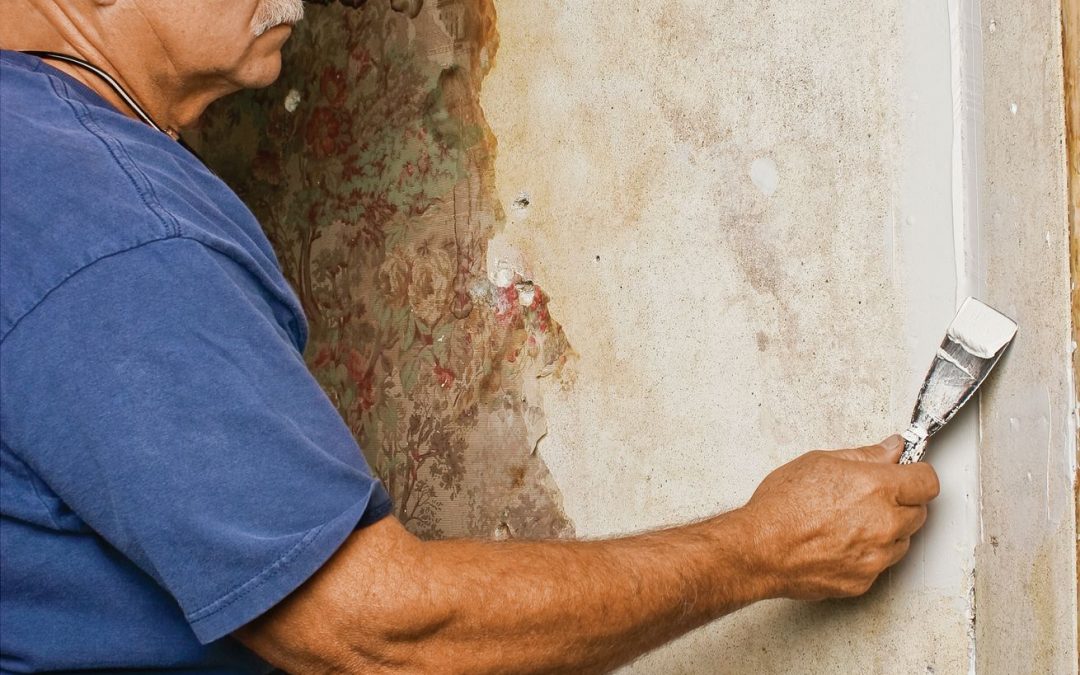 Although this rarely happens, this factor should not be discounted, especially in areas located close to seismic activity zones.
Although this rarely happens, this factor should not be discounted, especially in areas located close to seismic activity zones.
Subjective reasons
Their list includes:
- the installation of sheets on the frame was carried out without the necessary offset. In other words, the seams also have a through cruciform strike, while it was desirable to achieve the location of the gypsum plasterboard apart. In particular, this problem can manifest itself where the area of the ceiling surface is significant. Such a change in the seams can be caused even by ordinary external vibrations created by street transport;
- , when mounting the suspensions, they were fastened not with two, but with one self-tapping screw inserted into the central hole. Perhaps it seemed to the installers that the hangers were rigid enough and one fastener would be enough to fix them, or maybe it was a matter of haste or excessive savings. The suspension on one self-tapping screw gradually sags under the weight of the plate and can cause cracks.
 A loose ceiling also does not hold a dowel with a self-tapping screw built into it, which is why sagging is also possible;
A loose ceiling also does not hold a dowel with a self-tapping screw built into it, which is why sagging is also possible; - the sealing of gypsum plasterboard tile joints on the surface is of poor quality. Sometimes they are not completely filled with putty mixture, as a result of which the sheet has a small space for displacement. A fully filled joint creates a monolithic joint that prevents cracking;
- no primer coat. Without a primer, the degree of adhesion of the putty to GKL decreases. And if there is dust left on the seams, sooner or later it will make itself felt;
- drywall joints on the canvas are puttied without reinforcing serpentine mesh. The strength of the seams noticeably suffers from this and, in addition to cracking, they also begin to crumble;
- has not been chamfered. On the sides of the plates, as a rule, there are no technological recesses for applying putty, so you have to take a sharp knife with a hard blade or a special planer for plasterboard and chamfer at an angle of 45 ° along the entire length of the short side of the sheet.
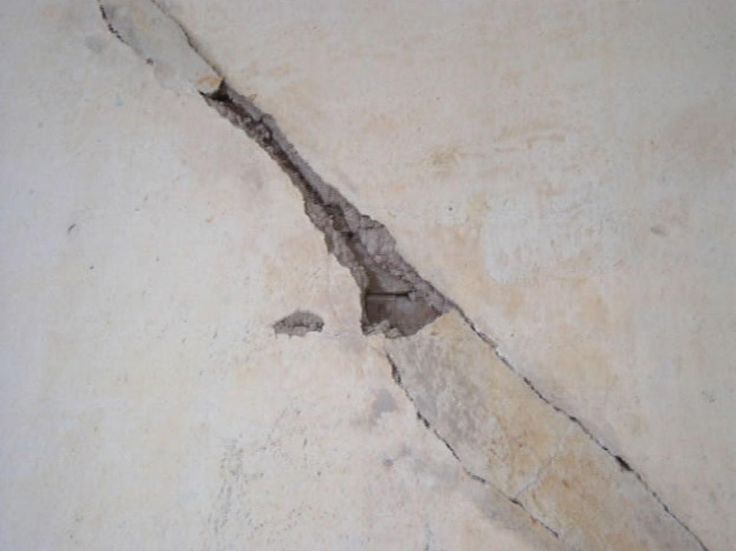 This also applies to working with slab fragments;
This also applies to working with slab fragments; - wood was used as the frame material. Although the use of wood is not prohibited, if at the time of installation it was damp or not treated with hydrophobic compounds, it can change its volume and length, causing longitudinal and transverse deformations. The use of a wooden frame is justified in dry, small-sized rooms. In rooms with a significant area, there is a high probability that the ceiling made of plasterboard on a wooden frame will crack;
- flooding from above. Yes, probably the most unpleasant thing that can happen in this case. Sometimes the amount of moisture leaking from the neighbors is insignificant and it only slightly moistens the ceiling covering from above, without seeping through the thickness of the slab. But when the water dries out, it can cause cracks to form on the drywall at the very seams. If the neighbors do not behave honestly, it is problematic to understand anything in this case.
Troubleshooting
Whatever the reason for the appearance of cracks on the plasterboard ceiling, you don’t want to put up with it for a long time.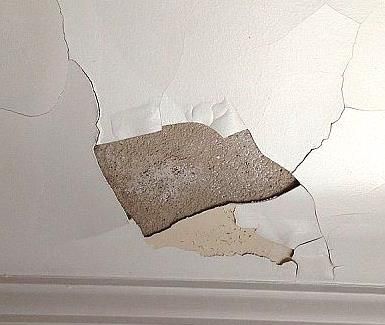 But before starting restoration work, you need to make sure that the cause of the problem is correctly identified, otherwise the situation may repeat itself.
But before starting restoration work, you need to make sure that the cause of the problem is correctly identified, otherwise the situation may repeat itself.
First, let's check the condition of the coating. To this end, you can press it a little to the top in several places and determine if there is a large backlash and general sagging of the structure. If this is traced, then you need to come to terms with the fact that you will have to redo the entire surface. When the problem is local, it will be enough to define its boundaries.
Materials and tools
When starting to repair the ceiling, you need to have on hand several spatulas of various widths, a construction knife, sandpaper, a grout board with a grit size of 220-360 and a screwdriver, in case you need to dismantle a damaged fragment of the coating .
Tip : We will use a primer liquid, a strong putty like Knauf Fugenfuller and a regular finishing putty such as SatenGips as restorative materials.

Let's not forget about the paint, which should be enough not for some area, but for the entire ceiling, since local painting is likely to stand out from the rest of the coating. We will also prepare a paint roller and an appropriately sized paint tray.
Possible crack repair steps:
Cracks in plasterboard ceilings can range from simple to complex. If contour or cobweb-like cracks are observed in a separate area, it is better to completely dismantle it and examine the condition of the entire structure from the inside. If several ceiling hangers fall out, it is advisable to seal the holes for them or drill new ones next to them and securely fix them. And then screw the cut out fragment back, or replace it with a new one.
Starting the repair of the damage itself, do the following:
- we clean the seam with a knife and deepen it with a spatula for the entire thickness of the plasterboard;
- we remove the paint on both sides of the crack by 5-10 cm, and even more, since you will have to apply putty.
 The paint can be moistened with warm water and allowed to soak, and then removed with a spatula after 10-15 minutes;
The paint can be moistened with warm water and allowed to soak, and then removed with a spatula after 10-15 minutes; - interfering self-tapping screws can be unscrewed and screwed side by side, but so that they fall into the supporting profile;
- with a stiff brush, remove debris, dust from the seam and treat it with a primer;
- after the primer dries, prepare the sickle mesh and knead the Knauf Fugenfuller. You don’t need to knead a lot, so you may not have time to work out the material until it sets;
- carefully fill the seam with putty and immediately lay a serpentine mesh over it, smoothing it with a spatula and slightly sinking it. Make sure that there is no excess putty in the seam, otherwise, after drying, a bump will form, on top of which there will be a mesh, which then, together with the bump, will have to be removed, violating its integrity;
- after the joint putty has dried, it can be primed again and allowed to dry;
- after removing coarse irregularities, we proceed to applying the final layer of putty.
 Sometimes it may be necessary to apply several finishing coats;
Sometimes it may be necessary to apply several finishing coats; - after drying, we grind the putty area, remove dust from it with a damp cloth and proceed to painting. It is advisable to paint the putty part first with 1-2 layers, and then paint the entire coating with the final layer.
I would like the problem with the ceiling to be completely settled on this.
Related video
Ways to eliminate cracks in the plasterboard ceiling - causes
One of the commonly used building materials for finishing the ceiling surface is drywall (gypsum board).
The material won its popularity due to its excellent technical characteristics, in particular environmental friendliness, ease of installation and the ability to create the most incredible structures, niches, arches. But there are cases when, after repair, cracks appear on the plasterboard ceiling.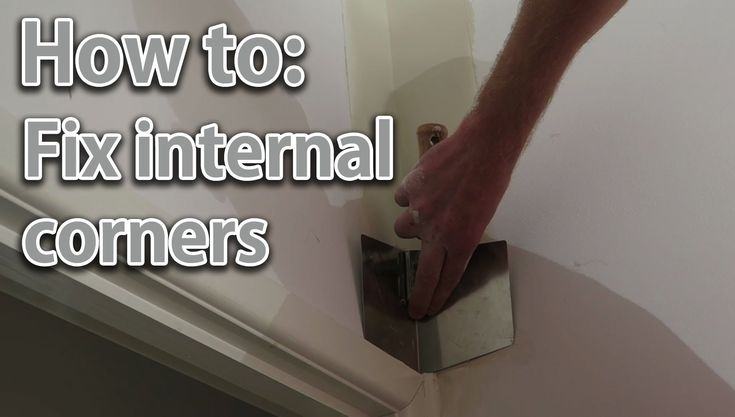 How to repair a crack in a plasterboard ceiling with high quality will be described below.
How to repair a crack in a plasterboard ceiling with high quality will be described below.
Contents
- 1 What Causes Cracks in Plasterboard Ceilings
- 2 Repair Materials and Tools
- 3 Preparing for Grouting, Checking the Ceiling
- 4 Like it? 9 Repairing Cracks Share on social networks!
- 6 ������� �������
- 7 ������� ���������� ������������
- 8 Causes of the phenomenon
- 9 Ways to eliminate damage
- 10 Causes of cracking joints on ceilings
- 11 Fixing shallow cracks
- 12 How to fix deep cracks
Causes of cracks in plasterboard ceiling
Among the most common factors that can provoke these troubles are:
- Simultaneous measures taken to install the air conditioner, heating system and puttying.
 With changes in the temperature regime in the room during repair work, cracks often form on the ceiling after 2-3 days
With changes in the temperature regime in the room during repair work, cracks often form on the ceiling after 2-3 days - Non-compliance with the installation rules when installing a plasterboard structure. A common mistake is the incorrect location of metal profiles - too much distance between them. Poor quality putty can also lead to trouble. The integrity of the drywall ceiling can also be violated by non-observance of the sequence of actions, for example, the installation of lighting fixtures and the design of openings for ventilation were made after sealing the seams
- Plasterboard ceiling installation too rigid to walls or columns. With this approach, there is a “movement” of the ceiling in the space of the joints of the ceiling and walls. The bottom line is the appearance of lines of distortion that went along the seams between the drywall sheets. Since the main profiles were attached to the rails with self-tapping screws, and the sheets were fixed to the rails, which determined the excessive rigidity of the finished structure.

- "Dry" method of mounting ceiling structures to the overall parts of the plasterboard. It would be more correct to use delimiter tape and putty to separate these structures. That is, the joint had to be performed not close to the treated wall.
- Incorrect laying of reinforcing tape. You must first apply the right amount of putty under this tape to create a strong bonding layer and remove the resulting air bubbles. To correct the error, you will need to do everything again with better quality.
- Use of insufficiently well-dried grating or solid flooring made of natural material - wood. Due to the deformation during shrinkage of new rafters or beams, prerequisites arise for significant sheathing shifts, which leads to the appearance of cracks.
- The presence of dust particles on the seams does not allow them to connect well with the putty. How to fix cracks in a plasterboard ceiling in this case? It is necessary to use a deep penetration primer before filling measures.

Materials and tools for repairs
To repair the defects that have arisen on a plasterboard ceiling, you will need a whole set of construction tools and knowledge of the technology for eliminating such troubles. Tools include:
- hard spatula
- special hard knife
- crack chisel
- sandpaper
- special diamond mesh
- spatula with a width of 100-150 mm
- composition Uniflot or Funefuller
- paint roller
- deep penetration primer
- water spray bottle
- containers for paint, primer
- quality paint
Once you've got the right tools, you're ready to start repairing cracks in your drywall construction.
Mortgage preparation, ceiling inspection
To understand how to fix cracks in a plasterboard ceiling, it is recommended that you familiarize yourself with the construction work sequence. First of all, it is necessary to assess the size of the problem, the condition of the plaster layer, determine the true depth and width of the gap formed.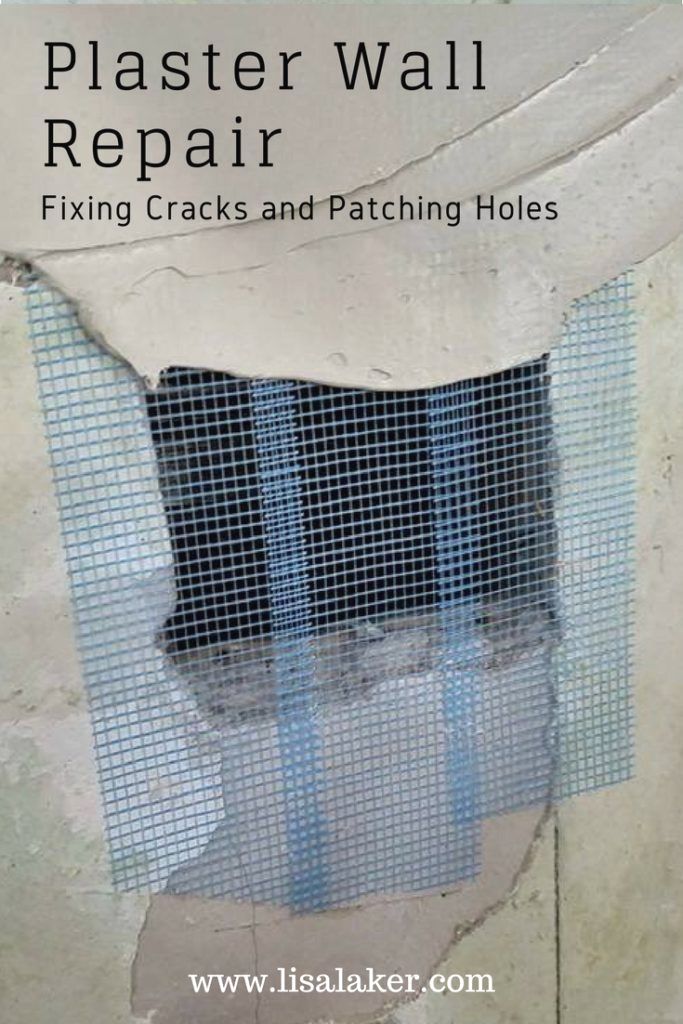
Preparatory work to eliminate defects begins with the removal of loose plaster sections, it is removed to layers that have retained their strength.
Cracks caused by the displacement of ceiling slabs must be well cleaned of plaster, decorative coating, putty, etc. You can remove the crumbling layer with a knife or spatula.
The resulting gap between the sheets of drywall must be freed from the reinforcing material and cleaned with a sharp knife, after chamfering the edges of adjacent boards. Surfaces to be corrected should be cleaned of dust particles by using a spray bottle with water. Modern putty mixes made on the basis of building gypsum have a low level of adhesion to a dry surface, so it is advisable to wet the surface to be sealed.
To find out if there will be cracks in the ceiling in the future, it is necessary to stick paper beacons on the crack. If after 2 days the paper remains intact, then you can start repairing defects.
Large sections of the ceiling will need to be replaced if errors are found during installation of the drywall construction.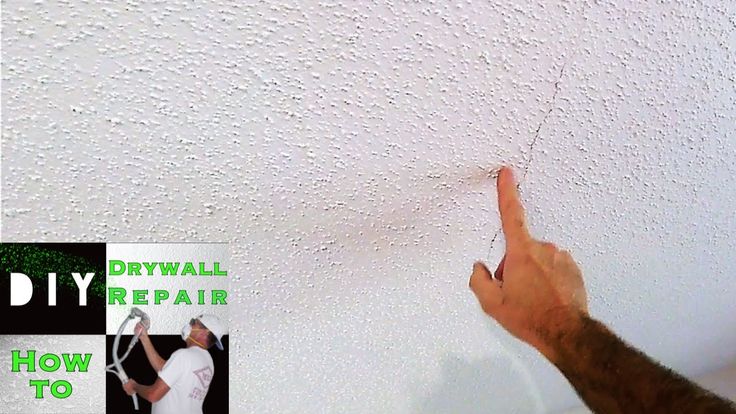
To repair and reinforce the framework, all drywall is removed and the primary ceiling is created. The level of the new surface must completely coincide with the rest of the sheets, and the joints must be carefully sealed.
Fixing a crack
So, how to fix cracks in a plasterboard ceiling.
Step-by-step instructions:
- After cleaning and preparing the surface, treat it 1-2 times with a deep penetrating primer emulsion;
- Prepare the working solution (putty) following the instructions on the package;
- Fill gaps. Perform all actions carefully, leveling the putty well with a spatula;
- Leave the repaired area to dry overnight;
- Using sandpaper, bring the surface to the maximum smoothness;
- The corrected plane is ready for finishing (painting, wallpapering, etc.).
This option is suitable for patching shallow gaps.
Larger cracks require the use of a sickle. The sealing process consists of:
- Filling deep gaps;
- Sickle stickers;
- Re-filling after the first coat has dried;
- Grouts and paints.

Preferably paint the surface with the same paint as for the first finish, from the same manufacturer. This is an excellent solution when repairing a badly damaged surface.
In the most difficult situations, when it is necessary to close pronounced defects, you can use various waterproof sealants, mounting foam. Especially these measures help with the possible risk of leaks from above.
Alternatively, to remove the crack, you can make a special bandage from linen or cotton fabric. A strip of fabric should not only cover the gap, but also cover its edges by at least 2-3 cm.
To prevent shrinkage of this bandage, it must be washed and ironed. After that, the fabric is moistened in a container with an adhesive composition, squeezed out and applied to the repaired area. The strip is leveled, puttyed after drying.
After studying the above information, it becomes clear how to remove cracks in the plasterboard ceiling after painting.
Did you like it? Share on social networks!
����� �� ������ �������������, ��� ����� ������� ������ ��������� ������� �� ��� ������� �� �������� �������.
���, ������, ������ ��������. ��������� ��������, ���� � ��������� � ������� ���������� . ������ ���������� ������ �� ������, ���������� �� ������ ������, � ���� �� ���� ����������, ���� ���������� � ���� ���� �����.
������ ��������
�� ������ ����, �������� ������ ������ ���� ������� � �������� ����������� ������� �������� � �� � ���������� �������� ���������� ���� � ����� ������� �� � �������������� ����������, �������������� ���� �������� �������. ��, ���� �������� �������� ������, ���� �������, ���� �� �� �� ��������������, �� ���������� �������� ���� ������ � �������.
- ������������ ������ ����. �� ���� �� ���������� � �������� ������ �� ���� �������� ���� ����� �������� � ��������������.
- ������������ ������ ������ ��������������. �������, � �������� ������ ���������� ����������, ������ �������������� �� �� ����������, � ������. �� ���� �������� �������� ������������.
- ����� ��������� ���������� ������� �������� ���������� .
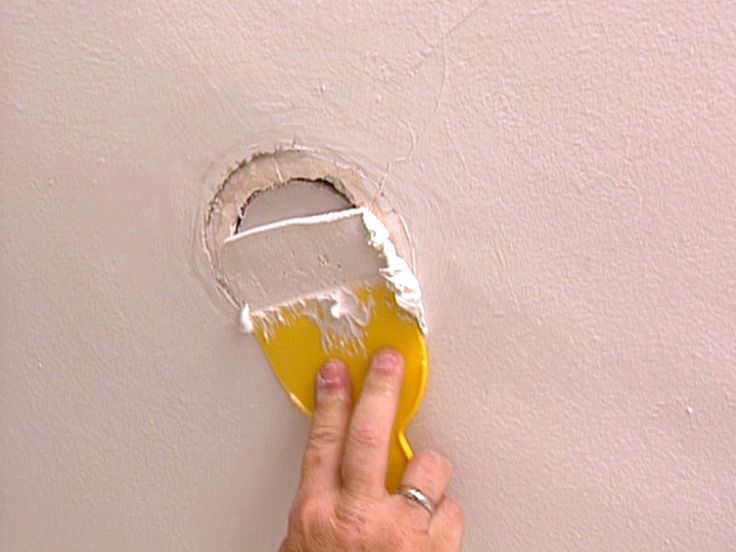 �� �� ���������� ������ ������ ������ �� ���������� ���� ��������� ���� ��� ��������.
�� �� ���������� ������ ������ ������ �� ���������� ���� ��������� ���� ��� ��������. - ���������� ��������. ����� �������, � ������ �������, ������� � �������������� ��������������� �������.
- ������� ��������. ���� �������� ������������ �� ������ ������ ������, ���� ���, ������������ ������ ������ �������� �������� ������ ��, �������� �������� � ���������� ������ ���� �� ������ �� ����������, �� ������ �� � ����.
. ��������, ������ ��������, ���������� ������, �� �������� �. ����� � ������������ ������ ��������� �� ������� �� ����� �� ������, ��, ���������� �� �� �� ����������.
���� � ���������� ��� ������ ������������ ������������ � ����� � ��������� ����������������.
��� ������������ �������� ����������� ����������. ���� ������, ���� �������� � � ������������ ����������. ��� ��� ������������, �� ������ ������������ ������ � ���� ��������� ������������ ��������.
�������� ���������� ������� ��� �������� ��� ���� �� ��� �������� � ���� ������ ��������� ����������� � ������ ��� ���������� �������, ����� ��������� ������ ������ ���� � �� ��������� ����� ������ ������.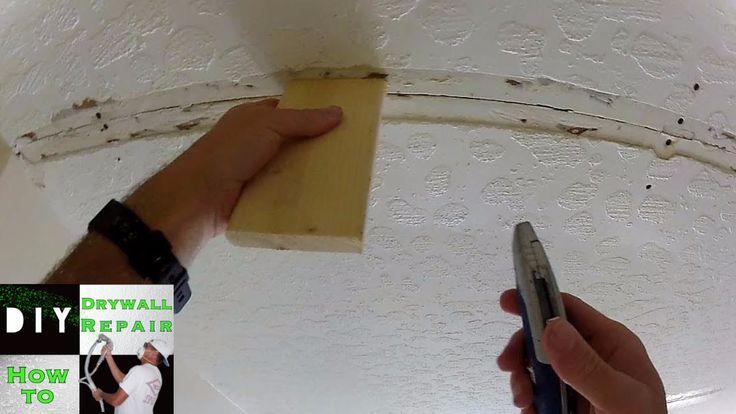
������ ���������� ������������
���� �������� �� �� �, ��� �� ��������� ������� �� ��������� ������ ��������, � � ����� ���������.
� ��� �� ���������� ������������ ���������� �������� ���� ���������� ����������. ������, ���� ���������� ������ ������ �� �������, ������ ���� ��������� ������� � ���������� ������� � ���������� � ��������� ���������. � ����������� �� �������� ������, ���������� ���� ����� �������� ������ ������.
�������, ����� ���, ��� �� ��������, ���� ������� ����� �. ��, ������ �� � ��������� �������� ������, �������� ��� � ��������. ��� ����������, ���� ������������� ��� ������ �������� ���� ������� ������� ��� ��������� � ������������, � ���� �� ������ ���� ������ ���� �������� ���������� �������� ������ ���.
�� ������ �� �������� ������ 2- 3 ������������. �������� �� �� ���� �� ������, �� � ���������� �������� � � �� ���������� ������ ���������� ����������.
������ ���� � ������ ����������, ���� ��������� ����� �������� ������. ����� ������������ ������, �� �� ������. ���� ������ �� ������ ������ ������ ��������� � ��������� ��.
����� ������������ ������, �� �� ������. ���� ������ �� ������ ������ ������ ��������� � ��������� ��.
����� ���������� ��������, ��������� ������ ���� ���� �������� ������. ��� ������������� ������������, ���� ����� �� ��������� � ������� ����� ��� ����������� ������������� �������. ���� �� ������������ ������ ��������, ���� ������ �������� ���.
������ ������ ���� ������������ �������������� �������� ������, ���� ���� ���� �������� ����������. ����� ����� ����� �������� �������� ��������� ���, � ����� � � �������� ��������� � �������� �������� ����� � ��� �� �� � ���������� �������� �������� ������.
����� ���������� ���� ����, ���� ���� ������������ ���� ����������� � ����������. �� ����, ������ �������� �� ������������ ����� ������� � ��� �� ���������� � ������.
0003
No one can guarantee that after finishing a plasterboard ceiling, cracks will never appear on it.
It's more of a matter of time. The appearance of cracks, albeit small ones, is an inevitable phenomenon.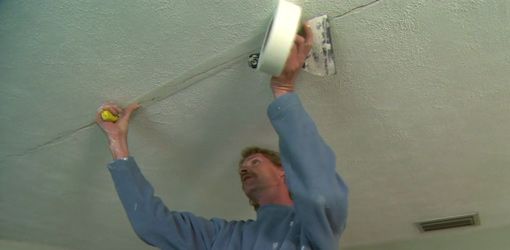 Why cracks appear on the ceiling made of plasterboard, and how to get rid of them, you can read in this material.
Why cracks appear on the ceiling made of plasterboard, and how to get rid of them, you can read in this material.
Causes of the phenomenon
In fact, the appearance of cracks can be associated with a huge number of external factors - from the impact of vibrations of a tram passing near the house to poor-quality material used in finishing work. But, there are several main reasons, knowing which, if not prevented, then maximize the life of the coating.
- Natural shrinkage of the house. You can’t get rid of it, and the appearance of cracks for this reason is most often possible in new buildings.
- Improper installation of drywall sheets. Often, in an attempt to save a little materials, installation is carried out not “in a run”, but end-to-end. Seams will inevitably be damaged.
- General violations of the technology of finishing similar materials. From not properly sealed joints to the lack of a primer layer during finishing.
- Frame sag.
 This phenomenon is primarily due to the use of low-quality fasteners.
This phenomenon is primarily due to the use of low-quality fasteners. - External vibrations. If the apartment is located on the first floors of the building, often heavy vehicles passing nearby cause vibrations that can lead to cracking even on concrete floors, not to mention the plasterboard.
Not all of these reasons can be eliminated completely. For example, it will not work to remove vibrations coming from outside. You can largely reduce their impact on the finished ceiling, but not completely get rid of them.
But with the sagging of the frame, you can fight very effectively - it is enough to use high-quality parts and mounting accessories during installation.
This virtually eliminates the possibility of sagging. The same can be said for the materials used. The better they are, the greater the likelihood of a long and trouble-free operation of the ceiling.
Violations of the technology of finishing or fixing gypsum boards are also easy to avoid - you just need to follow the instructions and follow the laying technology, then you can not be afraid of cracks for a very long time.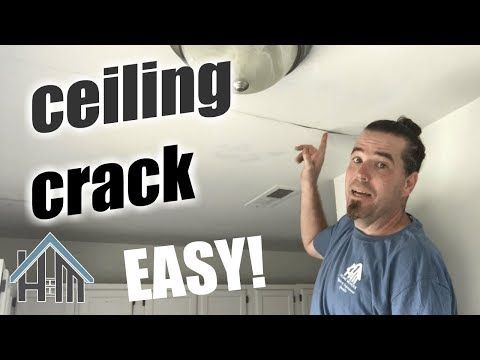
Troubleshooting
If, despite everything, defects still appear on the plane of the new coating, they can be eliminated.
And this does not require significant financial investments or special skills. Usually, in order to repair cracks in the ceiling, primary skills in finishing work and a small amount of material are enough. Depending on the size of the defect, a little more material may be required.
A crack needs to be made larger before it can be repaired. Yes, that's right - to expand the existing defect, increasing it in size. This is necessary so that the material applied during the repair has a large area for adhesion to the surface, and it is also possible to remove all loose particles of the coating.
At the edges of the resulting recess, it is necessary to remove the paint to a distance of about 2-3 centimeters. This is done for the same reason as the previous operation - to increase the adhesion area of the putty.
After removing dust and other contaminants, carefully prime the recess.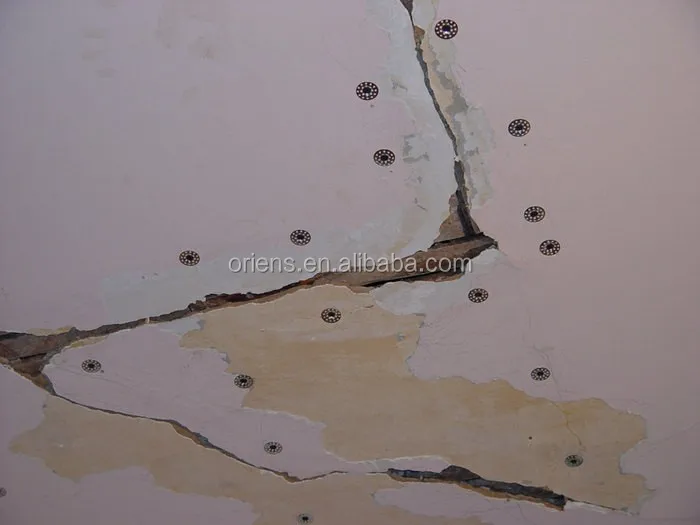 Better to use a brush than a roller. The pile of the roller does not always apply the primer well in the recesses.
Better to use a brush than a roller. The pile of the roller does not always apply the primer well in the recesses.
After the primer has dried, the first layer of putty mixture is applied. When using a fugenfüler, it will be possible not to use paper tape to reinforce the repaired area. If another putty is used, tape will be needed.
When the first layer of putty applied has dried, it is primed again. Next, it will be possible to apply a finishing putty or, in the case of conventional compositions, stick a paper tape and apply a finishing composition on its surface.
After this layer has dried, it must be sanded if necessary and painted. On this, the repair of the plasterboard ceiling will be completed and you can start cleaning.
Having made a chic plasterboard ceiling, after a while you may find that it cracked in some places. Moreover, the master is not always to blame. There are many objective reasons that provoke a divergence or displacement of the GKL joints.
If the crack is small, you can reanimate it yourself. The main thing is to figure out which factor caused the trouble, eliminate it, and only after that proceed with the repair. Let's figure out how to fix a crack in the ceiling without calling the master.
Causes of cracked ceiling joints
The first thing the owner should do when he finds a cracked joint is to press down on the ceiling and see how well it holds. If the plate moves, then local repairs are useless. We will have to carry out a complete dismantling and eliminate the shortcomings of the frame fastening.
An objective factor in the appearance of cracks in the ceiling in new buildings is house shrinkage.
If the building was built in a short time or on clay soil, the foundation will still “play” for three or four years, which means that there may be movements in the walls and ceiling slabs. In this case, you should not do expensive repairs at all in the next three years. And if the ceiling is already sewn up and cracks have appeared, you will have to endure until the building shrinks completely, since it is useless to repair.
Another common cause of cracks in the ceiling of a large room is the installation of sheet-to-sheet drywall, i.e. without moving seams. And if the house is located on a busy street, where the walls vibrate from constant transport or the neighbors from above made major repairs, then the seam may burst along the entire length of the room.
Installation of gypsum boards must be done in a checkerboard pattern, with offset seams, otherwise strong vibration may result in a crack along the entire length of the room mixture and GKL) or the chamfer was not cut off to improve the surface monolith. In any case, fix the problem for you.
Filling shallow cracks
The first step is to check how deep the ceiling burst.
And for this you will need a narrow spatula, which is used to carefully scrape off all the paint from the cracked seam until a sickle mesh is found. If the mesh itself is intact, then the problem was in poor putty or in the wrong application of layers. We will analyze in stages what to do with such a ceiling and how to cover it up.
We will analyze in stages what to do with such a ceiling and how to cover it up.
The entire cracked surface is expanded at the edges by a few cm to completely remove the crumbled drywall
- We expand the edges of the crack by 2-3 cm from the sides, using a spatula or chisel.
- We clean the problem area with a mesh in order to remove the remnants of putty as much as possible.
- We pass with a mesh (or sandpaper) the edges of the cut out place to remove the water-based emulsion layer. It will interfere with the reliable bonding of putty and drywall.
- We brush off the resulting dust with a dry brush and coat the surface with a primer.
- We are waiting for complete drying (at least 12 hours).
- Putty with a wide spatula. If the crack is deep, putty in several stages, applying a second layer after the first has dried.
- The puttied surface must be smooth and level with the overall surface of the ceiling.
- We are waiting for drying and primer again.

- It remains to paint over the place of repair, and it is better to do it not pointwise, but to walk with a roller along the entire ceiling. Otherwise, fresh paint may be whiter than last year.
How to fix deep cracks
If on your plasterboard ceiling, after stripping the old putty, it turned out that the craftsman did not use sickles or it cracked, you will have to strengthen this place with adhesive tape yourself. Otherwise, cracks will appear regularly.
If the junction of sheets of hl is not reinforced with sickle tape, sooner or later the seams will open.
- Remove the old tape and sand the surface to the width of the new one.
- If there was no sickle, expand the crack to the width of the tape, completely removing the remnants of putty (so that the GKL sheet is clearly visible).
- Check if there is a chamfer at the joints of the sheets - a corner cut at 25 degrees. It is made for better adhesion of the layers.
